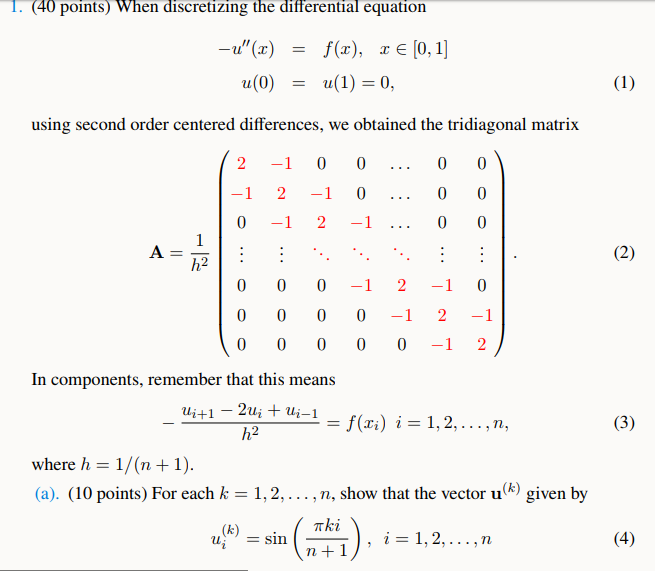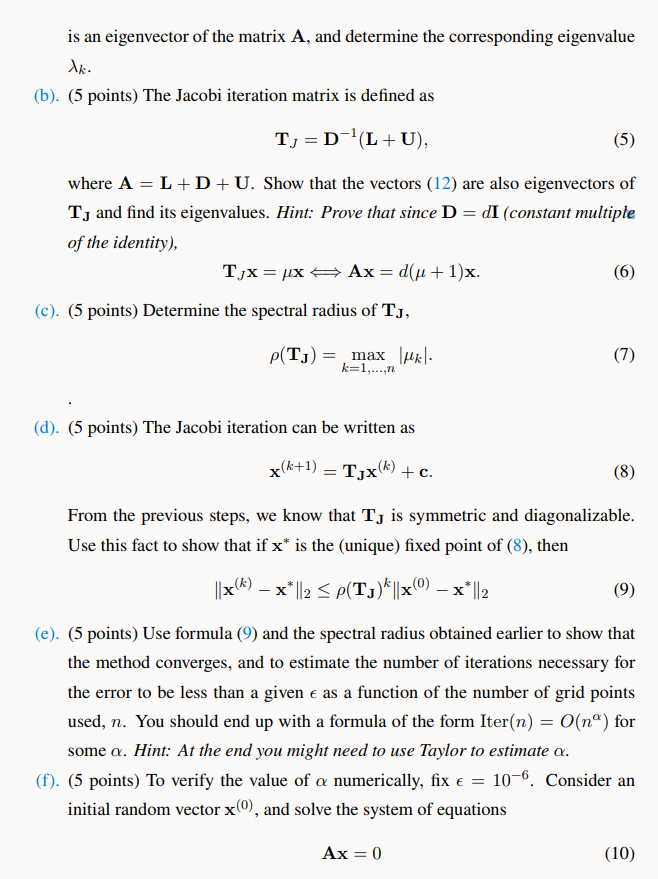Answered step by step
Verified Expert Solution
Question
1 Approved Answer
For b), the equation 12) is 1. (40 points) When discretizing the differential equation = -u (2) u(0) f(x), re [0,1 u(1) = 0, =


For b), the equation 12) is 
Step by Step Solution
There are 3 Steps involved in it
Step: 1

Get Instant Access to Expert-Tailored Solutions
See step-by-step solutions with expert insights and AI powered tools for academic success
Step: 2

Step: 3

Ace Your Homework with AI
Get the answers you need in no time with our AI-driven, step-by-step assistance
Get Started


